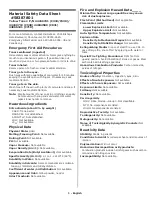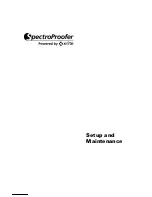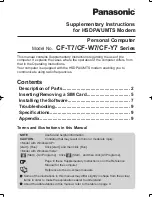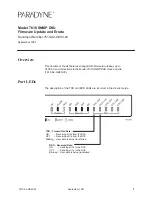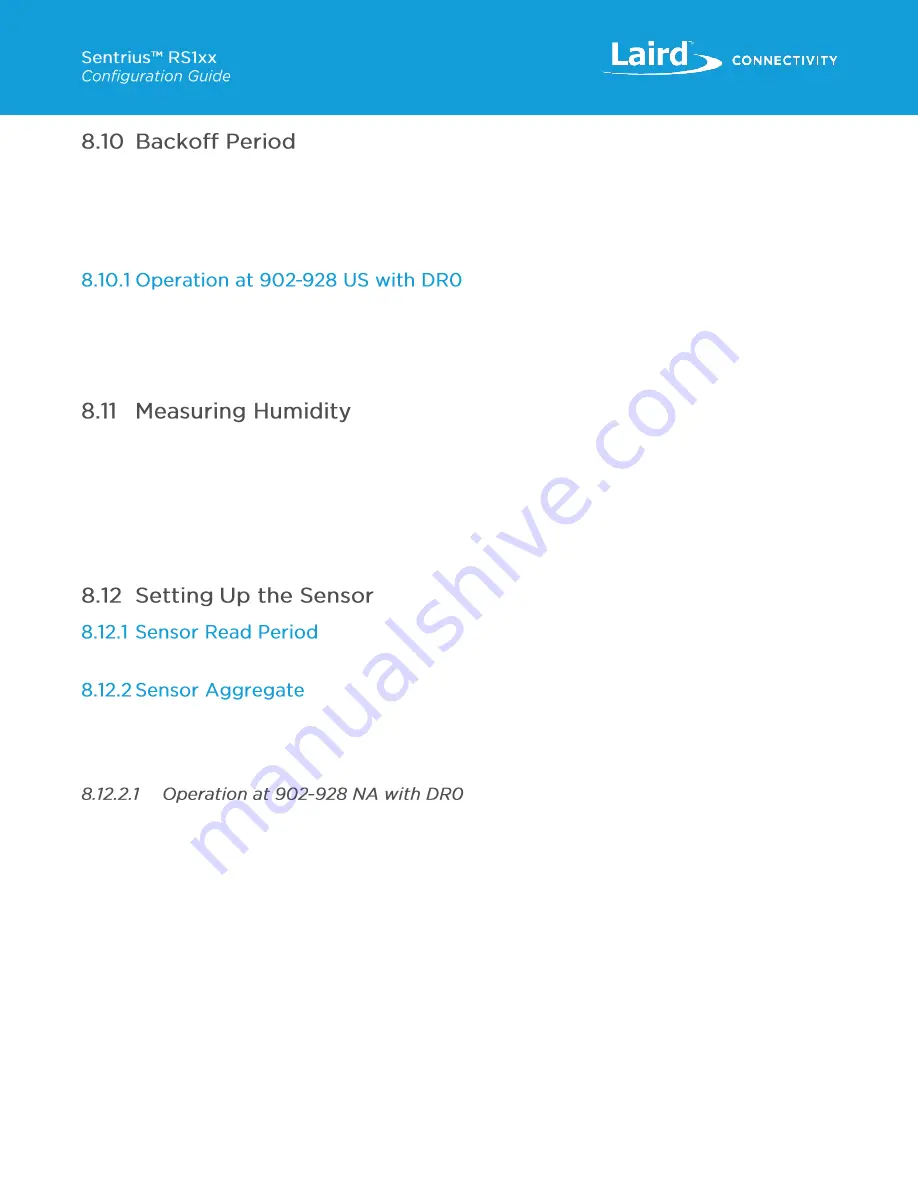
https://www.lairdconnect.com/wireless-modules/lorawan-
solutions
22
© Copyright 2020 Laird Connectivity.
All Rights Reserved
Americas: +1-800-492-2320
Europe: +44-1628-858-940
Hong Kong: +852 2923 0610
The backoff period is one of the LoRa messages that you can send to the sensor from the server (see the
RS1xx LoRa
Protocol Guide
Because retrieving the backlog may consume a large
percentage of the bandwidth, it may be wise to make use of the backoff message. This message can be used to stop the
sensor from sending data for a period of time, thus opening more bandwidth for the sensor. While a unit is in the backoff state,
it continues to read the sensor, but it stores its data to FLASH. The backoff period could be assigned to the sensor from which
the backlog is extracted, other sensors in the network, or both, depending on the application.
Normally the sensor attempts to package up to six backlog readings into a single backlog uplink message. This keeps the total
number of bytes in the packet less than 51 bytes, which is the limiting factor in the EU.
See
for details. Only 11 payload bytes are available when operating at DR0 in the 902-928 (NA) band. At
this data rate, the sensor only sends one backlog message at a time as this is all the data that can be fit into an 11-byte
message.
Measuring humidity accurately in certain circumstances can be difficult. Temperature swings, dew points, and other factors
can lead to condensation on the sensor, leading to inaccurate humidity readings. To combat this, there is a heating element on
the sensor itself which can be turned on to burn off this condensation and restore the sensor to proper operation. This is
activated by means of a downlink command, with the heater being switched on as soon as the command is received. See the
RS1xx LoRa Protocol
document for more information on this command.
This allows the API server (see
) to implement an algorithm that is appropriate for the sensor environment while
minimizing the power used in order to maximize battery life. Refer to the
Control Register.
The read period defines how often the sensor is read. For example, for a setting of 60, the sensor is read every 60 seconds.
The aggregate number is used to aggregate or bundle multiple sensor readings into a single RF packet. For example, with an
aggregate number of two and a sensor read period of 60, a RF message is sent every (60 seconds x 2) 120 seconds.
Obviously setting the aggregate count has a big effect on the battery life of the device; the less the device talks, the longer the
batteries will last.
Only 11 payload bytes are available when operating at DR0 in the 902-928 band. This can create a conflict with an aggregate
count greater than one, as the sensor cannot fit all the sensor data into the packet. In this case the sensor sends the last
sensor reading to the LoRa server and logs the remaining data to FLASH. A flag is set in the uplink message notifying the
server of the configuration error. It is the responsibility of the server to update the sensor configuration to use an aggregate
count of one if it is desired not to backlog data in this case.
Summary of Contents for 455-00095
Page 1: ...A Version 1 12 ...































